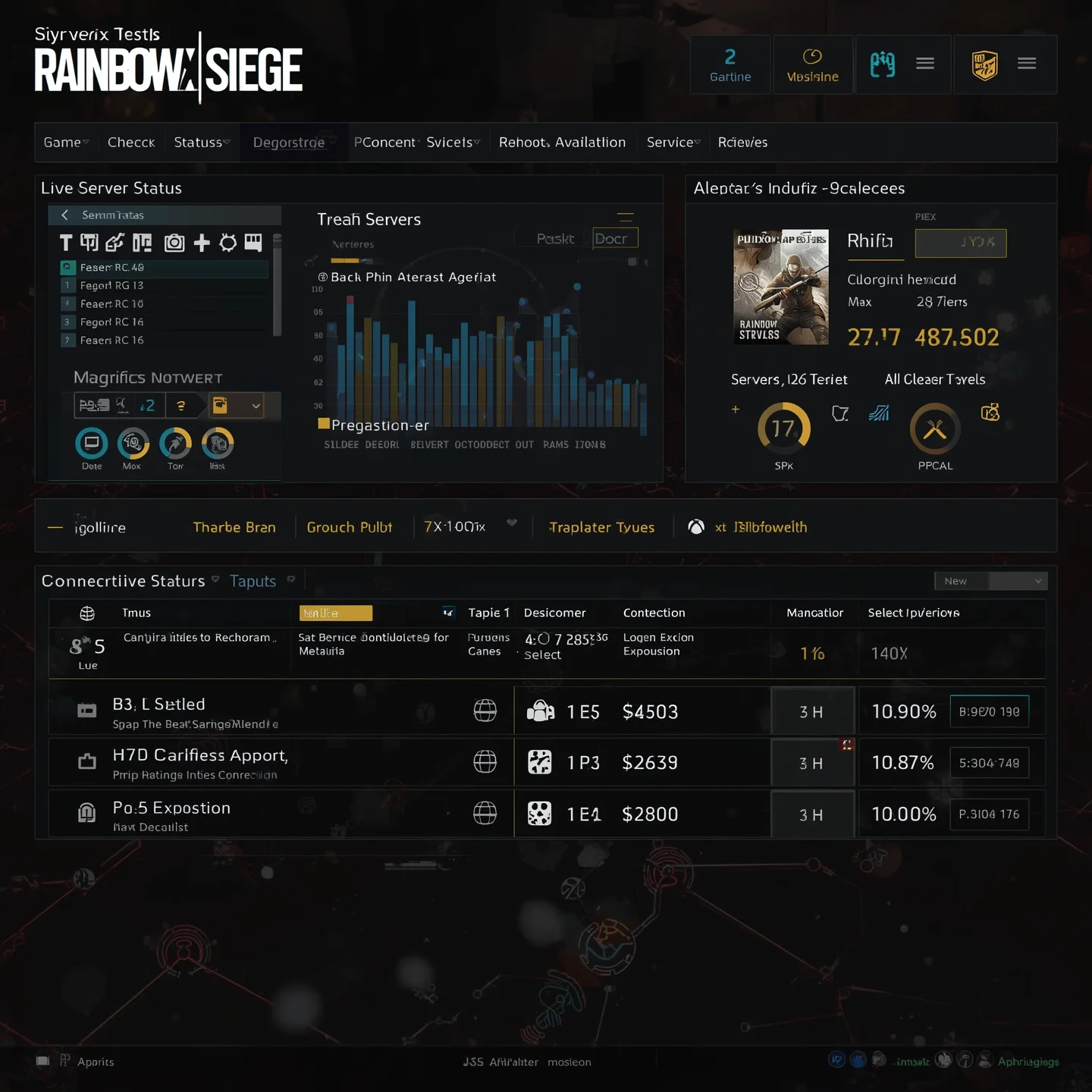When you want to jump into a fast-paced match in Rainbow Six Siege, nothing is more frustrating than running into server issues. Knowing how to check the siege server status can save you time and help you figure out whether the problem is on your side or Ubisoft’s. This guide explains everything you need to know about server outages, troubleshooting steps, and how to stay updated on maintenance schedules.
What Does Siege Server Status Mean?
The term siege server status refers to whether Ubisoft’s servers for Rainbow Six Siege are up and running. Like any online multiplayer game, Siege depends heavily on stable servers to ensure smooth gameplay.
When the servers are working properly, players can connect quickly, join matches, and enjoy a stable experience. But when servers are down or unstable, you may experience problems like:
- Long matchmaking times
- Failed connections
- Random disconnections mid-game
- Error codes preventing login
Understanding server status helps you separate widespread issues from problems specific to your own connection.
Why Siege Servers Go Down
It’s normal for online games to face occasional downtime. Here are the most common reasons behind Siege server issues:
1. Scheduled Maintenance
Ubisoft regularly schedules maintenance to improve performance, release patches, or update content. During these times, servers may be completely unavailable.
2. Server Outages
Unexpected crashes or overloads can bring servers down. This often happens during peak play hours or when a new season or major update launches.
3. Regional Issues
Sometimes, servers in specific regions may go down while others remain unaffected. This means players in Europe might face issues while North American servers run smoothly.
4. DDoS Attacks and Technical Problems
Like other online platforms, Siege servers can be targeted by attacks or face technical glitches that temporarily disrupt gameplay.
How to Check Siege Server Status
Before blaming your own internet connection, it’s best to confirm whether the problem lies with Ubisoft’s servers. Here’s how to check:
1. Official Ubisoft Server Status Page
Ubisoft maintains a live server status page where you can check the state of Rainbow Six Siege servers. This page updates in real time and shows whether servers are operational across different platforms (PC, PlayStation, Xbox).
2. Ubisoft Support Twitter (X)
Ubisoft often posts updates about server outages, maintenance schedules, and fixes on their official Ubisoft Support Twitter account. Following this account keeps you in the loop.
3. Community Platforms
Websites like Downdetector or Reddit threads provide player-reported issues. If a large number of players report problems at the same time, chances are the servers are down.
4. In-Game Notifications
Sometimes, Siege itself will display a warning message about connectivity issues or scheduled downtime when you try to log in.
Common Error Codes Related to Siege Server Status
When servers act up, you may encounter specific error codes. Knowing what they mean helps you troubleshoot faster:
- Error Code 2-0x0000D00A – Connection lost due to server issues.
- Error Code 3-0x0001000B – Matchmaking error, often linked to server problems.
- Error Code 2-0x0000E000 – Login failed, usually due to downtime or unstable servers.
- Error Code 2-0x0000C015 – Ubisoft services temporarily unavailable.
If you encounter these errors, it’s worth checking the siege server status before attempting fixes.
Troubleshooting Siege Connection Problems
Sometimes the servers are fine, but your own setup causes issues. Here’s how to fix connection problems when server status shows everything is running smoothly:
1. Restart Your Game and Device
A simple restart often resolves temporary glitches and reconnects you to the servers.
2. Check Your Internet Connection
- Run a speed test to ensure your connection is stable.
- Restart your router or modem.
- Use a wired connection (Ethernet) instead of Wi-Fi for lower latency.
3. Adjust Firewall or Antivirus Settings
Sometimes, firewalls or antivirus software block Ubisoft services. Make sure Rainbow Six Siege and Ubisoft Connect are allowed through.
4. Update the Game and Launcher
Outdated versions of the game or Ubisoft Connect may struggle to connect to servers. Always keep them updated.
5. Change DNS Settings
Switching to public DNS servers like Google DNS (8.8.8.8) can sometimes improve connectivity.
Staying Updated on Siege Server Status
To avoid surprises, you can stay ahead by following updates and being aware of planned downtime.
- Follow Ubisoft Forums and Support Pages – Ubisoft frequently shares information about upcoming patches and server maintenance.
- Enable Notifications on Ubisoft Support Twitter – Instant alerts about outages and fixes.
- Join Siege Communities – Reddit and Discord groups are quick to report when servers go down.
Being proactive ensures you don’t waste time troubleshooting when the issue is on Ubisoft’s end.
What to Do When Servers Are Down
When the servers themselves are the problem, there isn’t much you can do except wait. However, you can:
- Check if the downtime is scheduled maintenance.
- Use the time to read patch notes and prepare for upcoming content.
- Explore Siege’s offline modes to practice skills until servers are back.
Patience is key—most server outages don’t last long.
Final Thoughts
Keeping track of the siege server status is essential for every Rainbow Six Siege player. Whether it’s scheduled maintenance, unexpected outages, or regional issues, knowing the cause helps reduce frustration.
By checking official Ubisoft sources, troubleshooting your own setup, and staying connected with the community, you’ll always know whether the problem lies with your internet or Ubisoft’s servers.
The next time you face a connection issue, remember to check server status first—it could save you a lot of time and effort.





